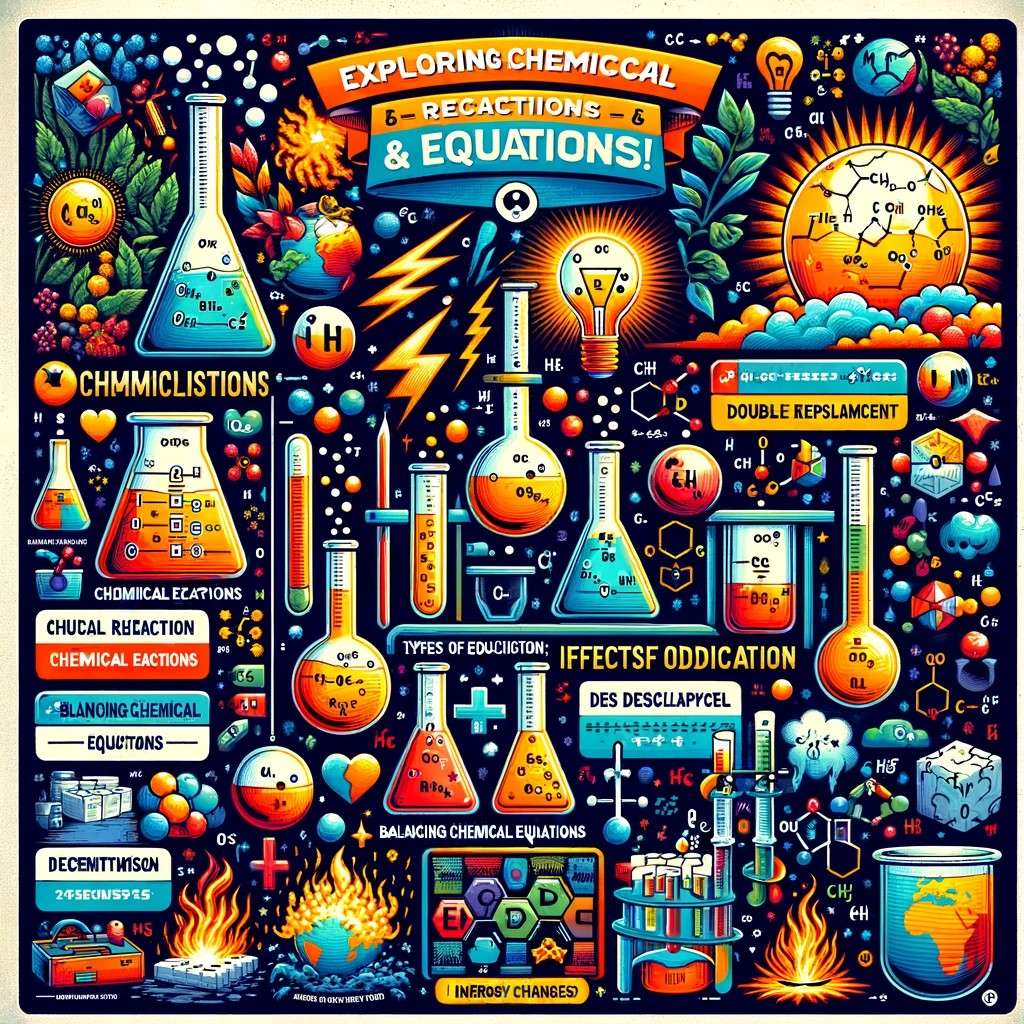
Understanding Chemical Reactions and Equations: A Guide for Class 10 Students

Welcome to the fascinating world of chemical reactions and equations! As you embark on this journey through Class 10 Science, we’ll explore the first chapter, which is all about the changes substances undergo to become entirely new substances. Let’s break down these concepts into easy-to-understand sections.
What are Chemical Equations?
Imagine you’re baking a cake. You mix certain ingredients (flour, sugar, eggs) and end up with something completely different (a cake). Similarly, in chemistry, when substances mix, they react to form new substances. These changes are represented by chemical equations, with reactants (the ingredients) on the left, and products (the cake) on the right. For example, when hydrogen reacts with oxygen, we get water, represented as (2H_2 + O_2 \rightarrow 2H_2O). It’s like a recipe for each chemical reaction!
Types of Chemical Reactions
Just like there are many ways to cook, there are different types of chemical reactions:
- Combination Reactions: Two or more substances combine to form a single product, like when iron and sulfur combine to form iron sulfide.
- Decomposition Reactions: A single substance breaks down into two or more simpler substances. Think of a large rock breaking down into smaller pieces.
- Displacement Reactions: One element takes the place of another in a compound. It’s like saying, “Excuse me, I’ll take it from here,” and swapping places.
- Double Displacement Reactions: Parts of two compounds swap places to form two new compounds. Imagine two dance partners swapping partners.
- Oxidation-Reduction (Redox) Reactions: These involve the transfer of electrons between two substances. It’s like sharing toys, but with electrons!
Effects of Oxidation Reactions in Daily Life
Oxidation reactions are not just lab phenomena; they affect our daily lives too:
- Corrosion: Ever seen rust on a car or bike? That’s corrosion, an oxidation reaction where metals react with oxygen, leading to rust.
- Rancidity: When food tastes or smells off, that’s often due to oxidation. Keeping food in air-tight containers helps prevent this.
Balancing Chemical Equations
Balancing equations is like making sure both sides of a seesaw are equally weighted. For a chemical equation, the number of atoms for each element must be the same on both sides. This respects the Law of Conservation of Mass, which says matter cannot be created or destroyed. If you have 2 hydrogen atoms on the left, you need 2 hydrogen atoms on the right. It’s a puzzle that ensures everything is accounted for!
Energy Changes in Chemical Reactions
Chemical reactions can either release energy (exothermic) or absorb energy (endothermic):
- Exothermic Reactions: Feel the warmth from a campfire? That’s an exothermic reaction releasing heat.
- Endothermic Reactions: Ever mix vinegar and baking soda for a volcano project? It absorbs heat, making it feel cool, which is an endothermic reaction.
Wrapping Up
By understanding chemical reactions and equations, we unlock a deeper appreciation for the world around us, from the food we eat to the air we breathe. These concepts are not just abstract ideas but are integral to everything in the universe. As you progress through your studies, remember that chemistry is not just about memorizing equations but understanding the changes that matter undergoes to form the world we see and interact with every day.